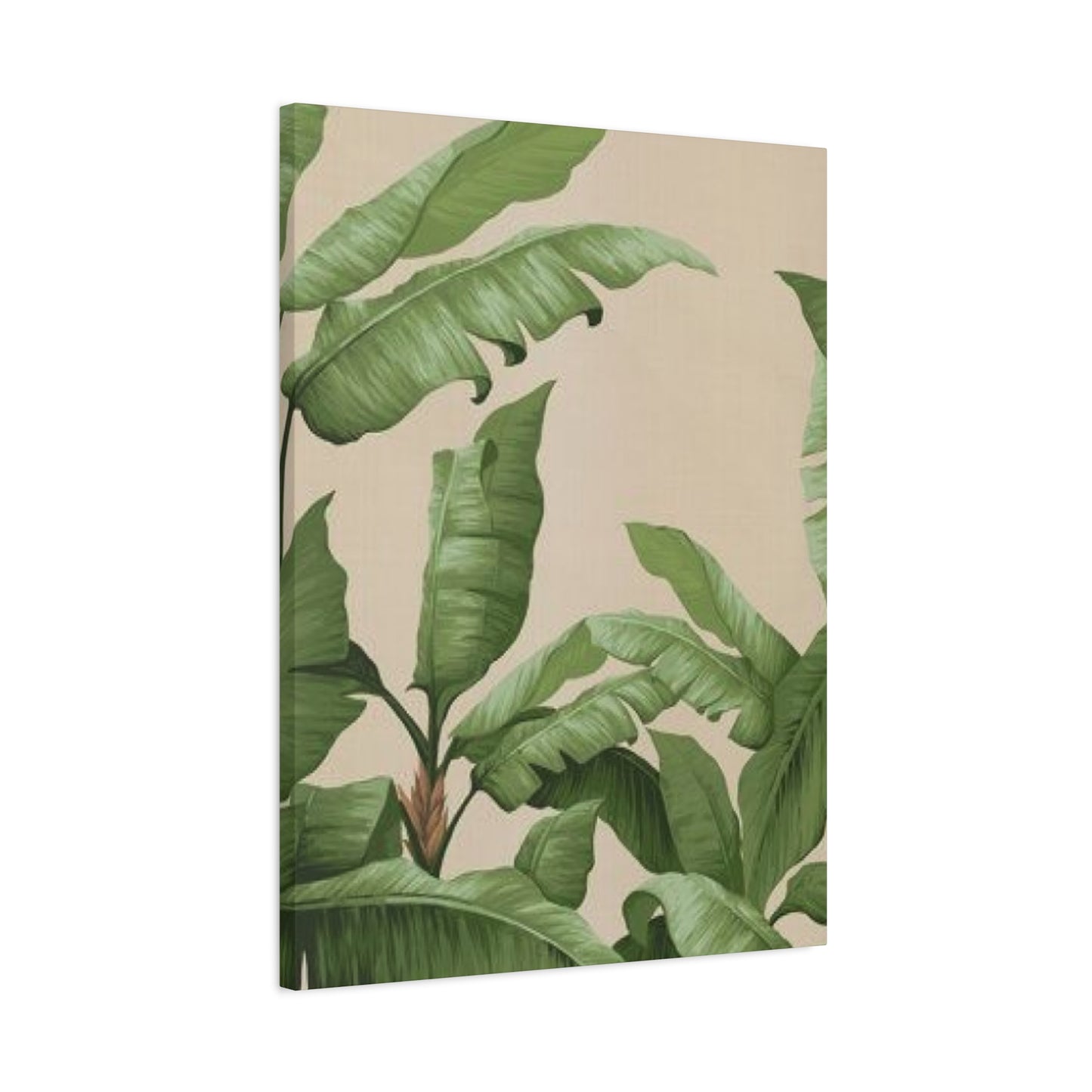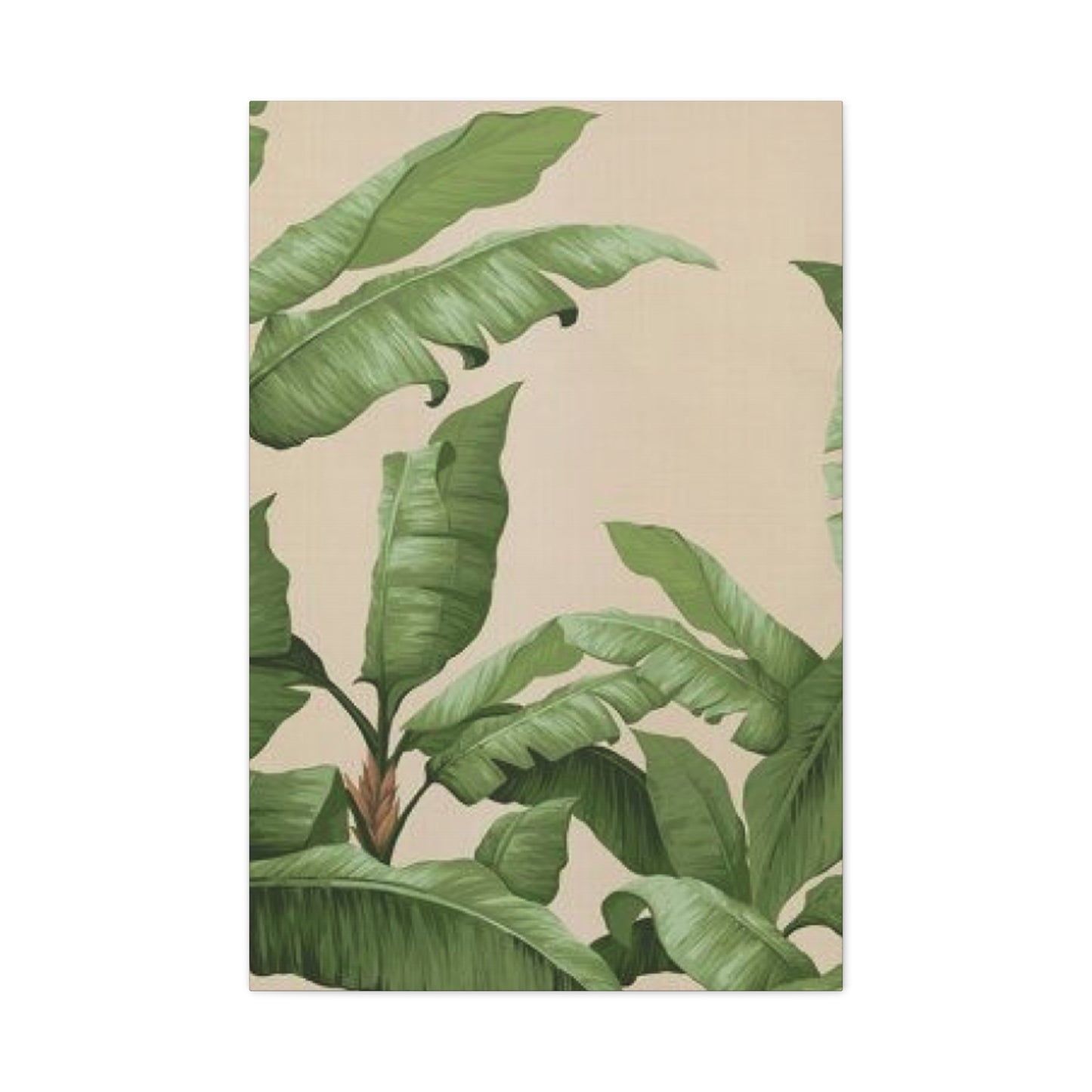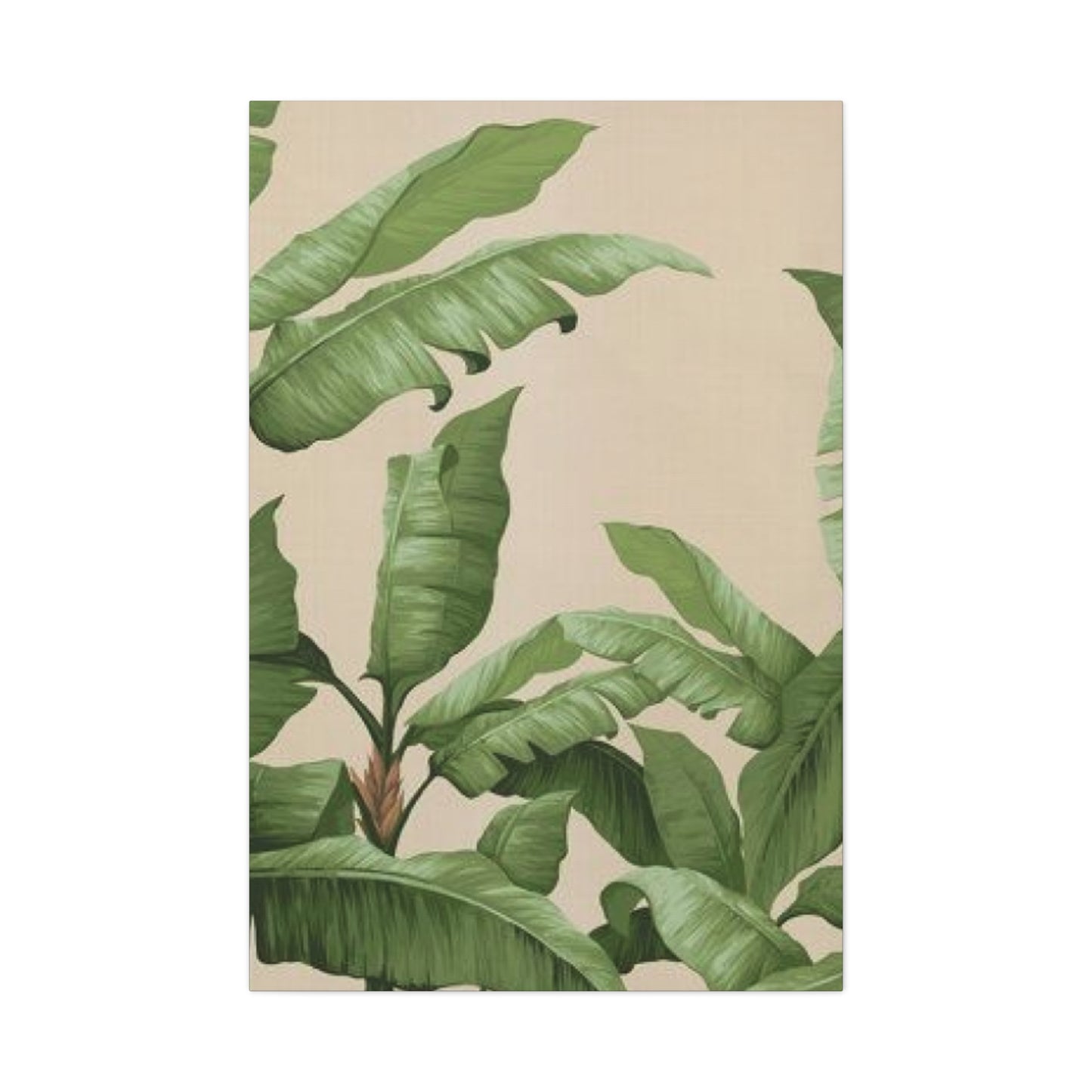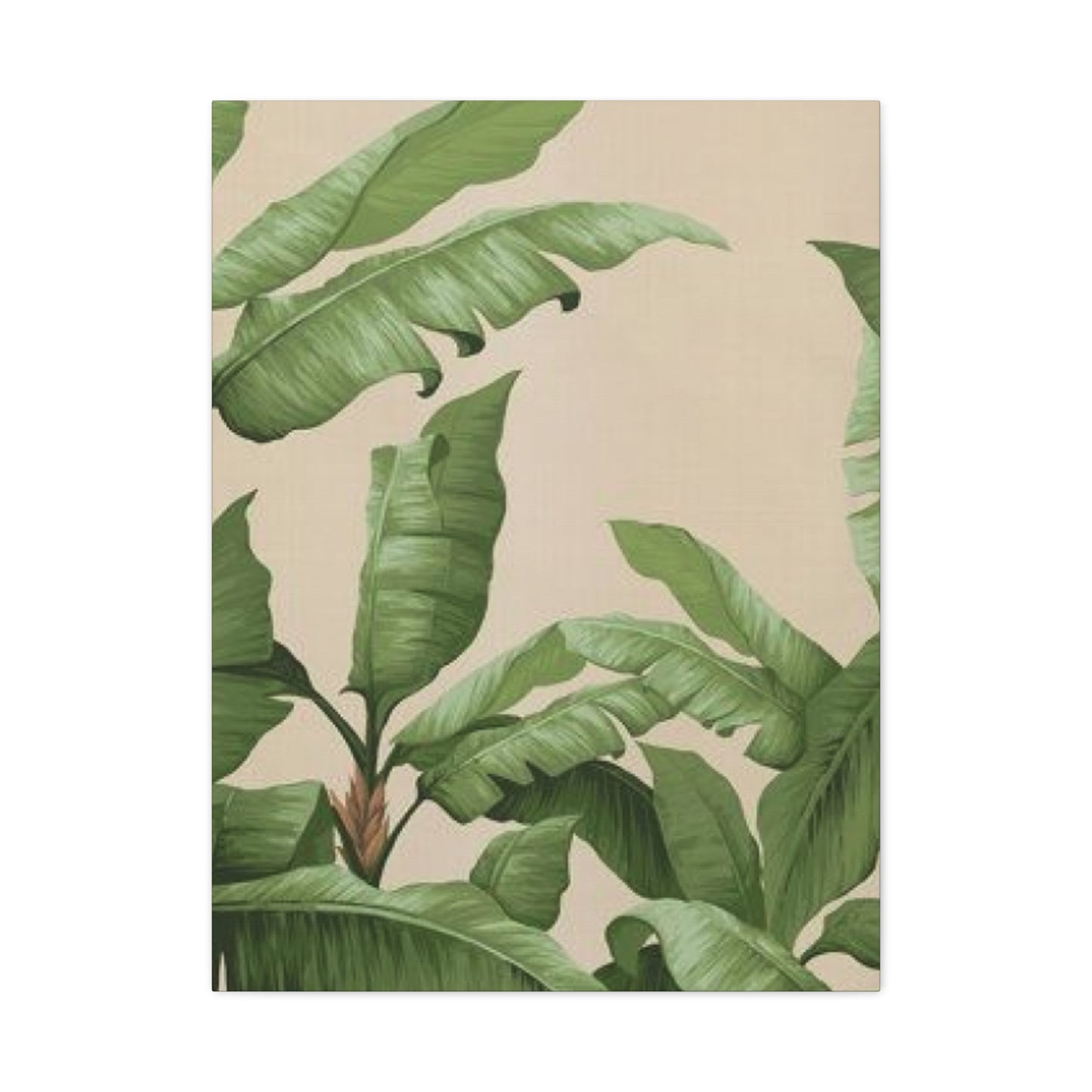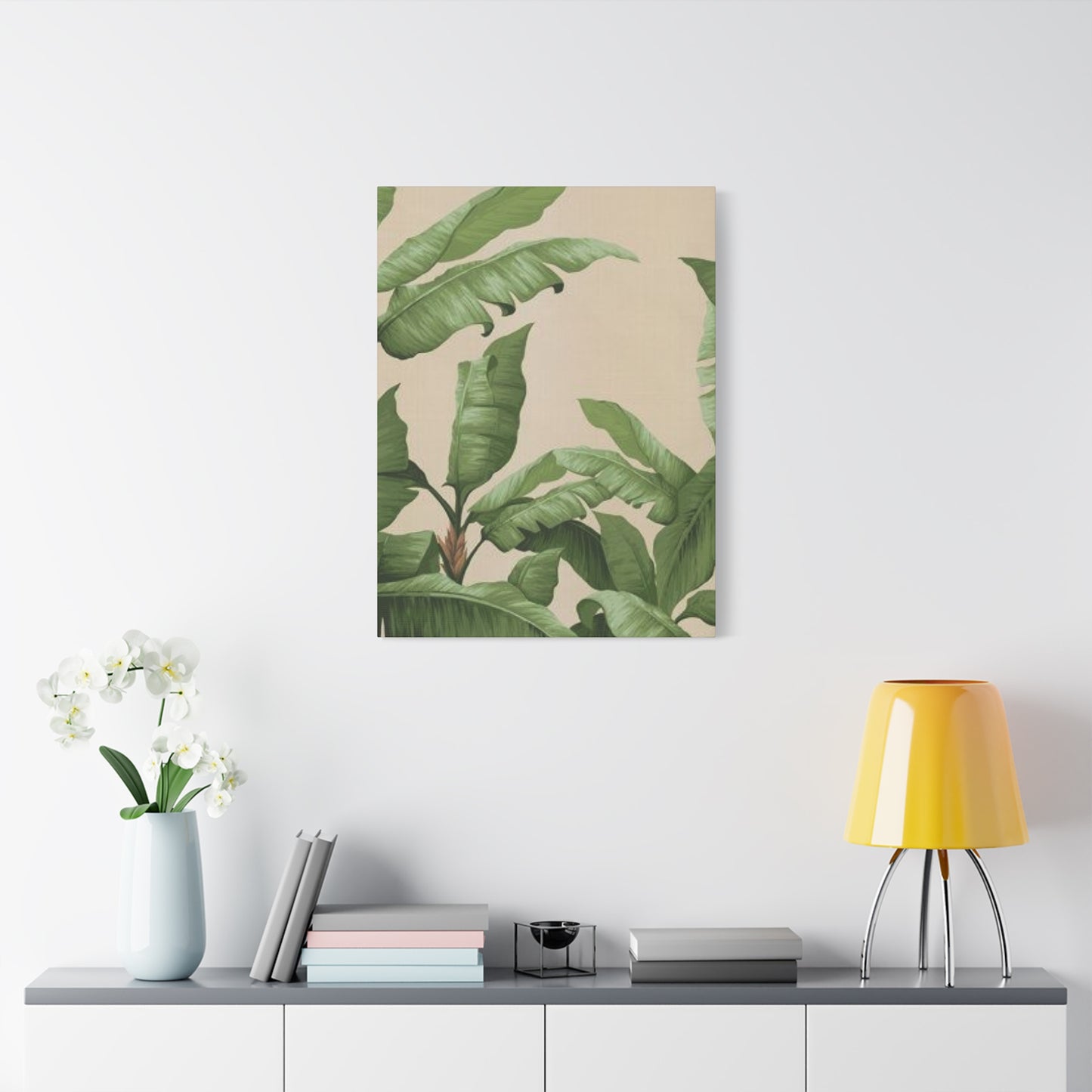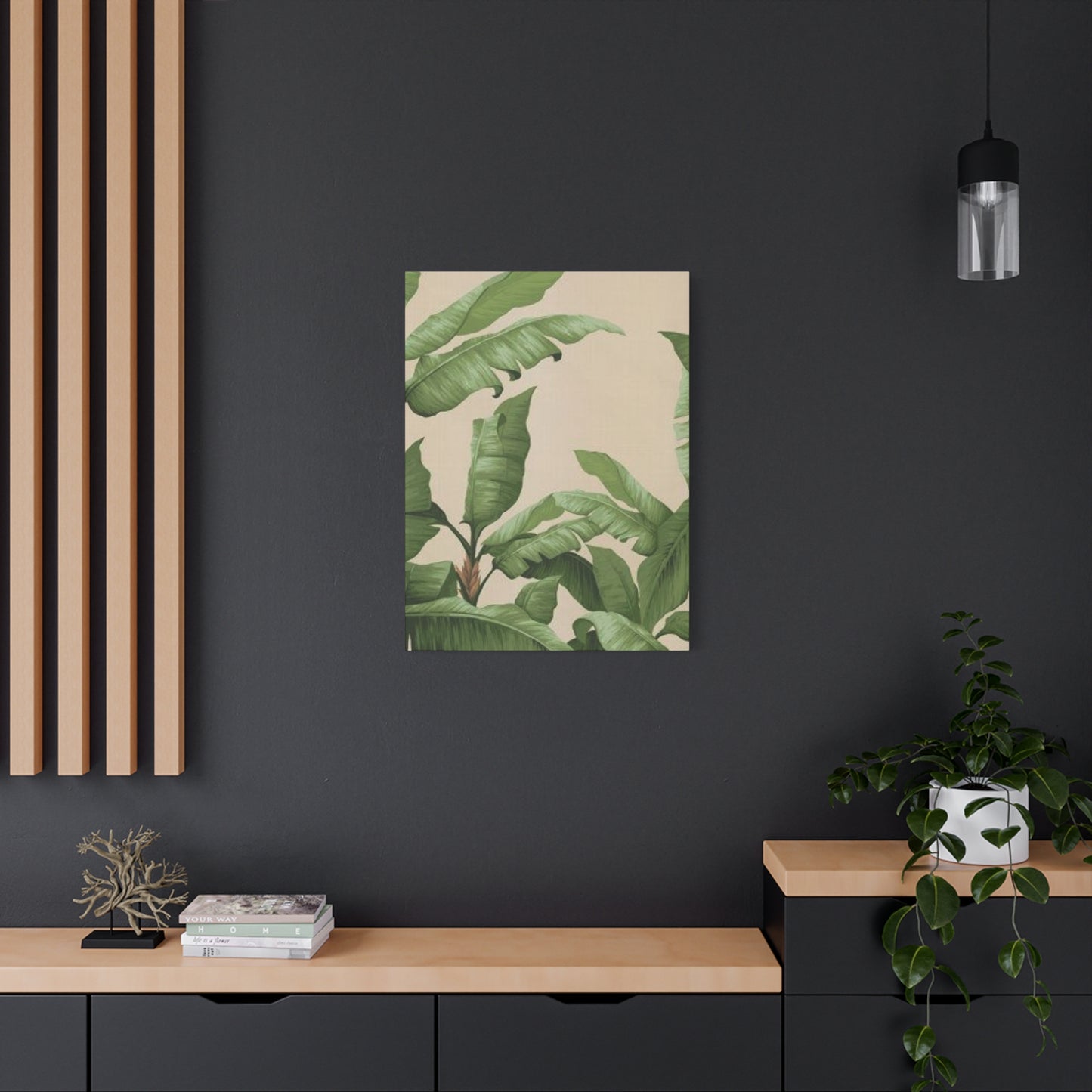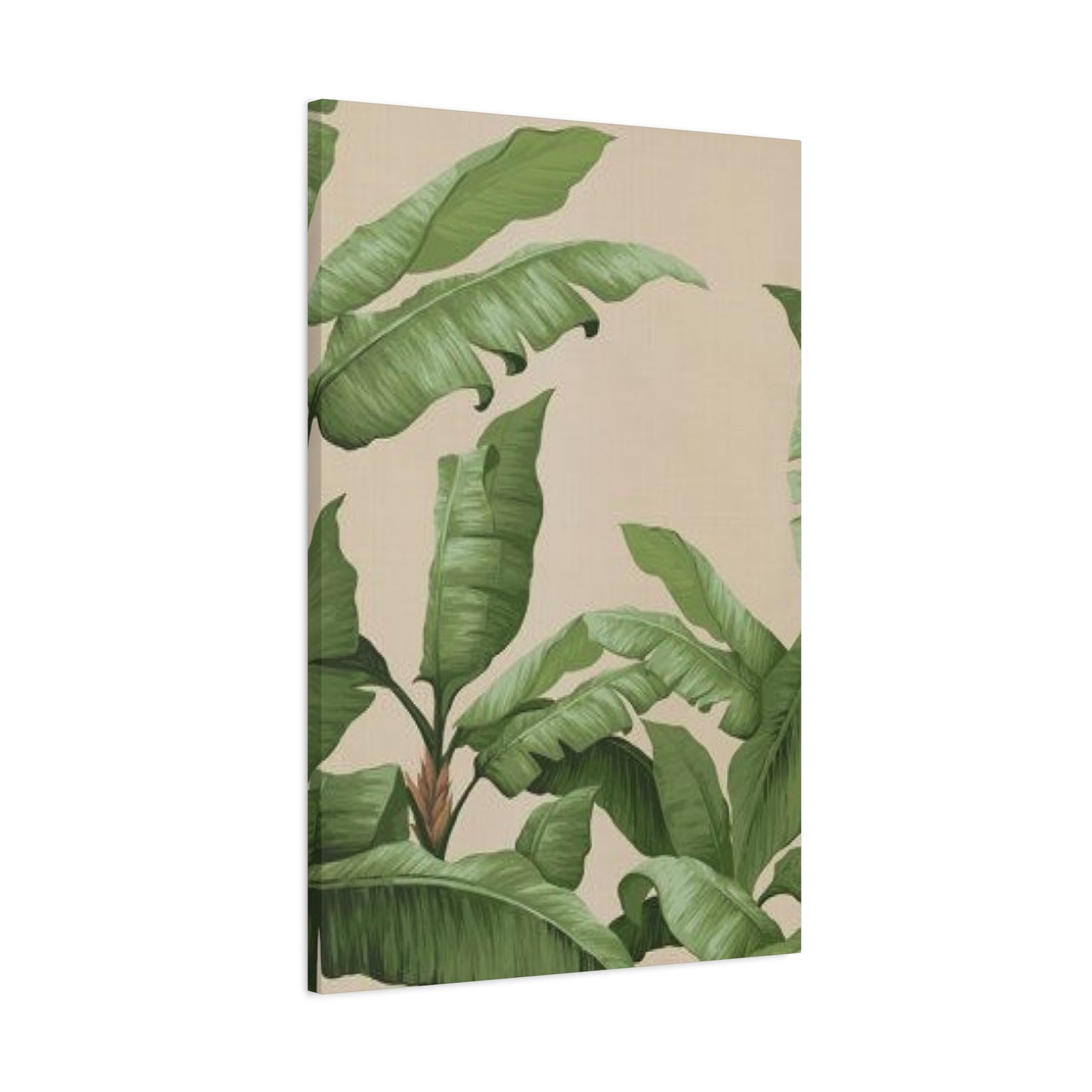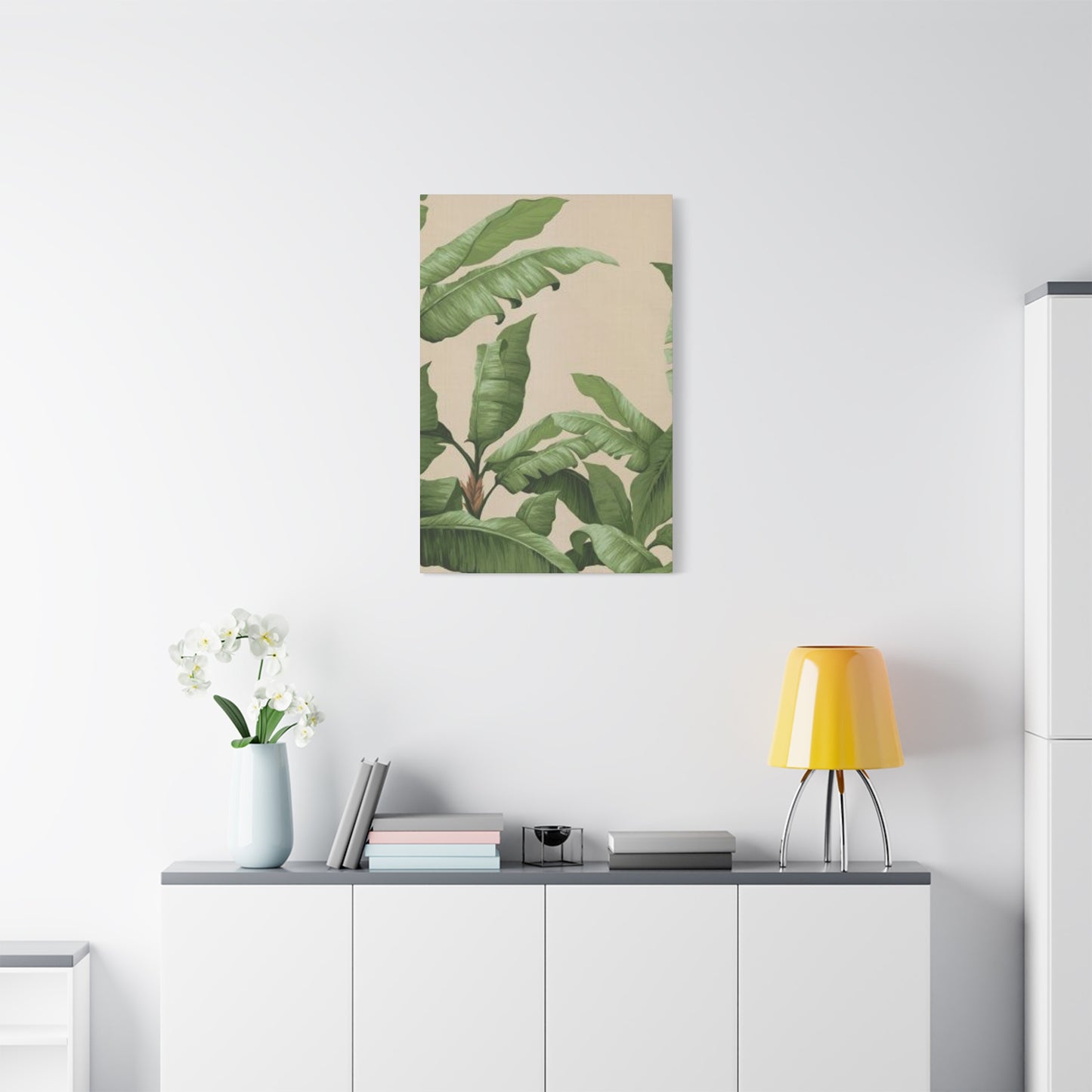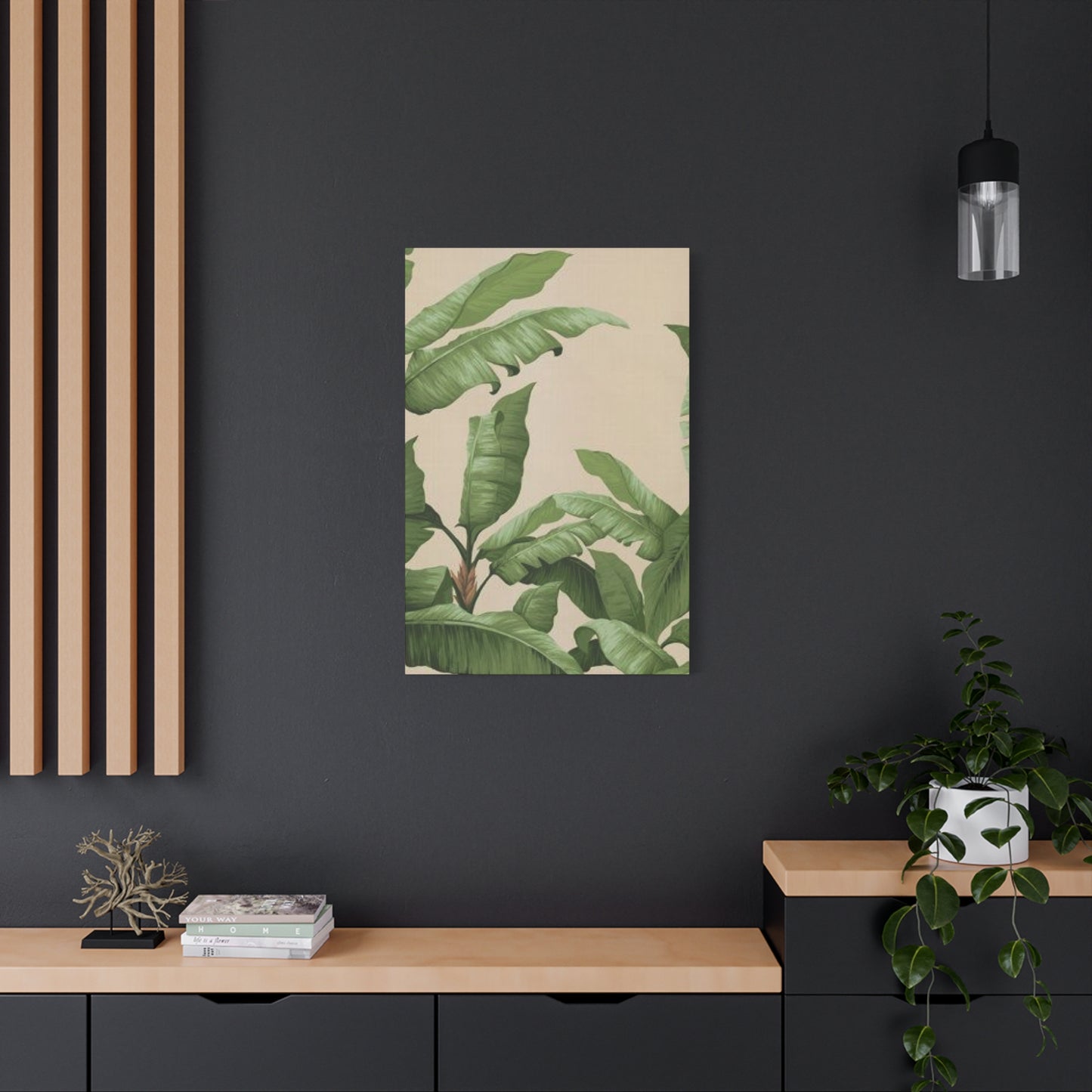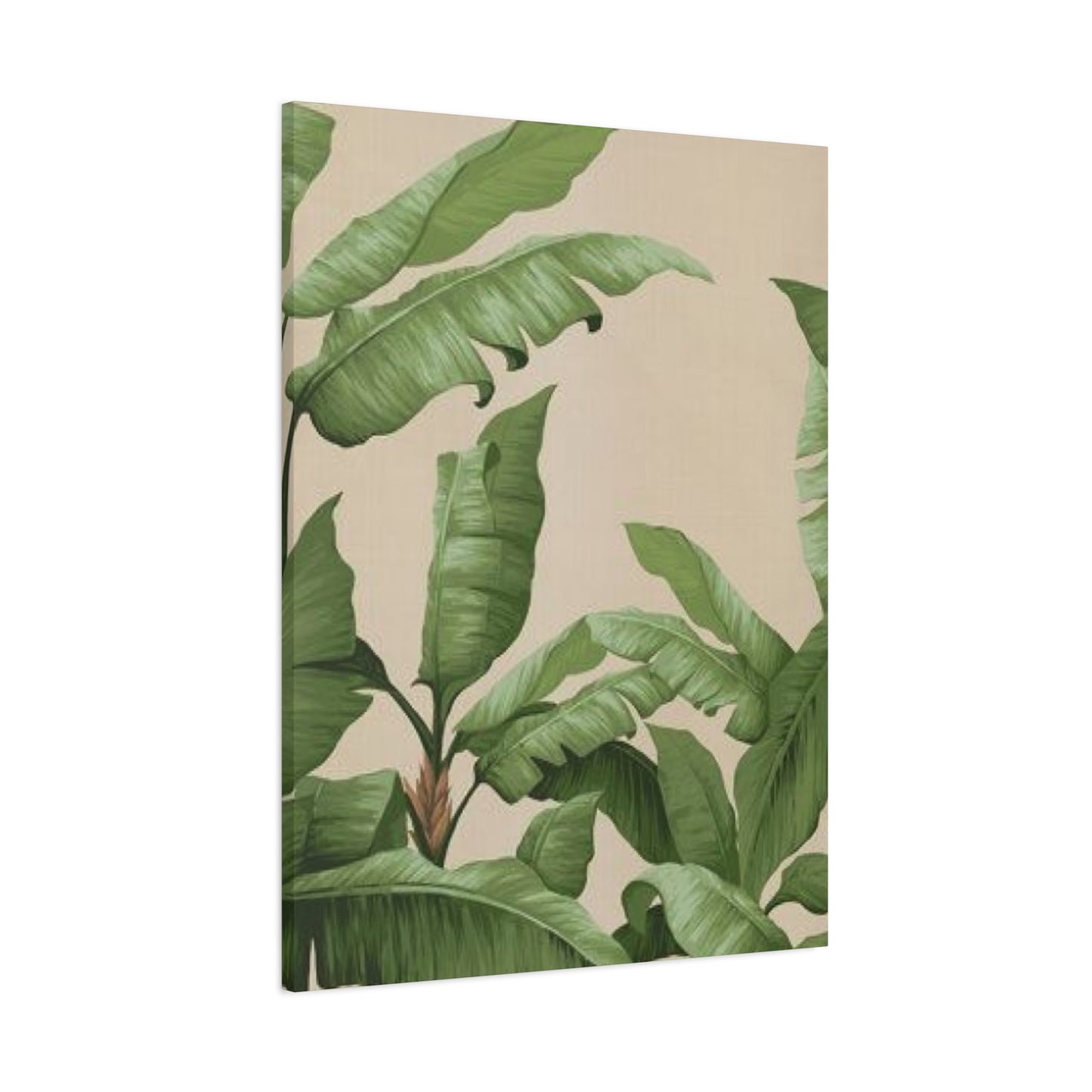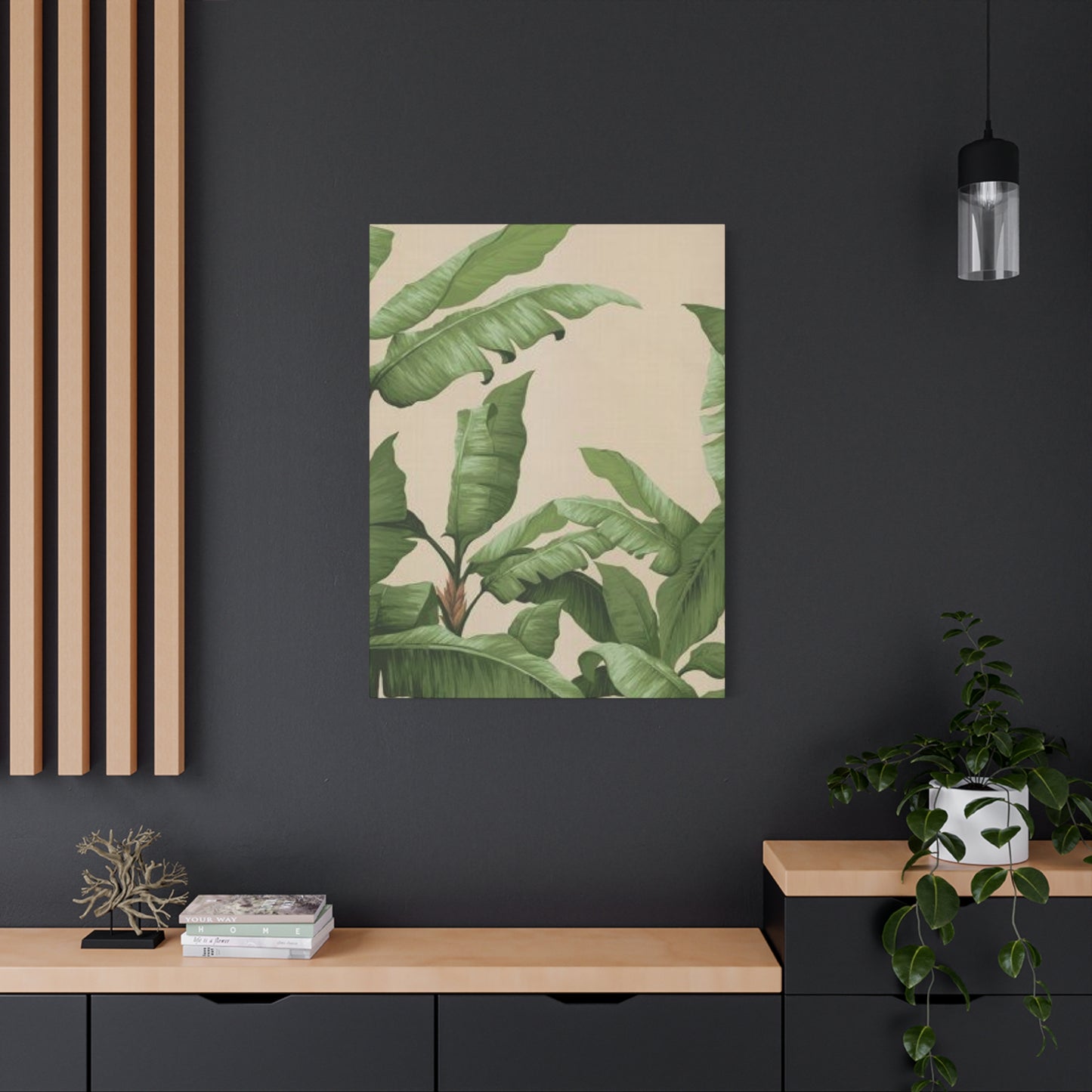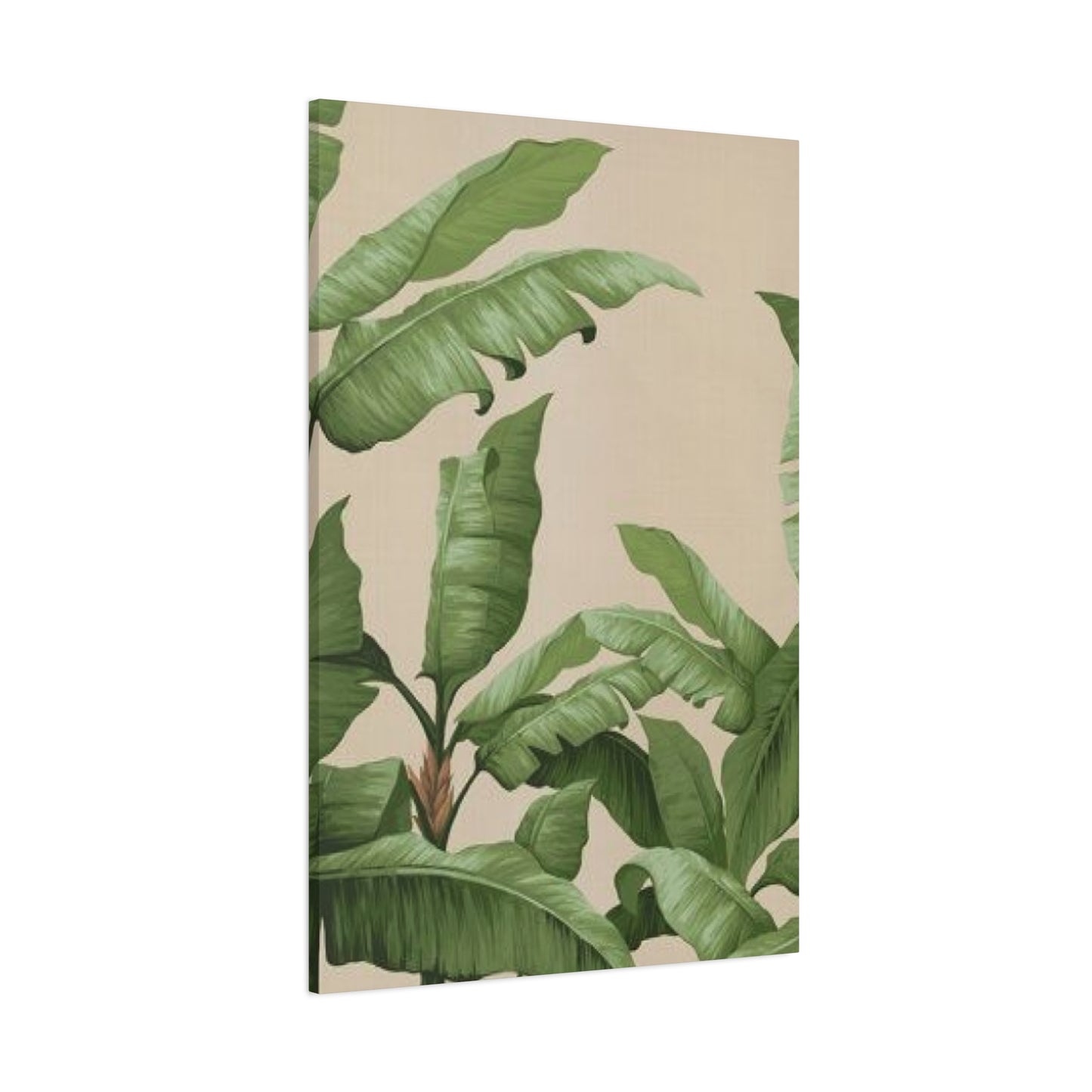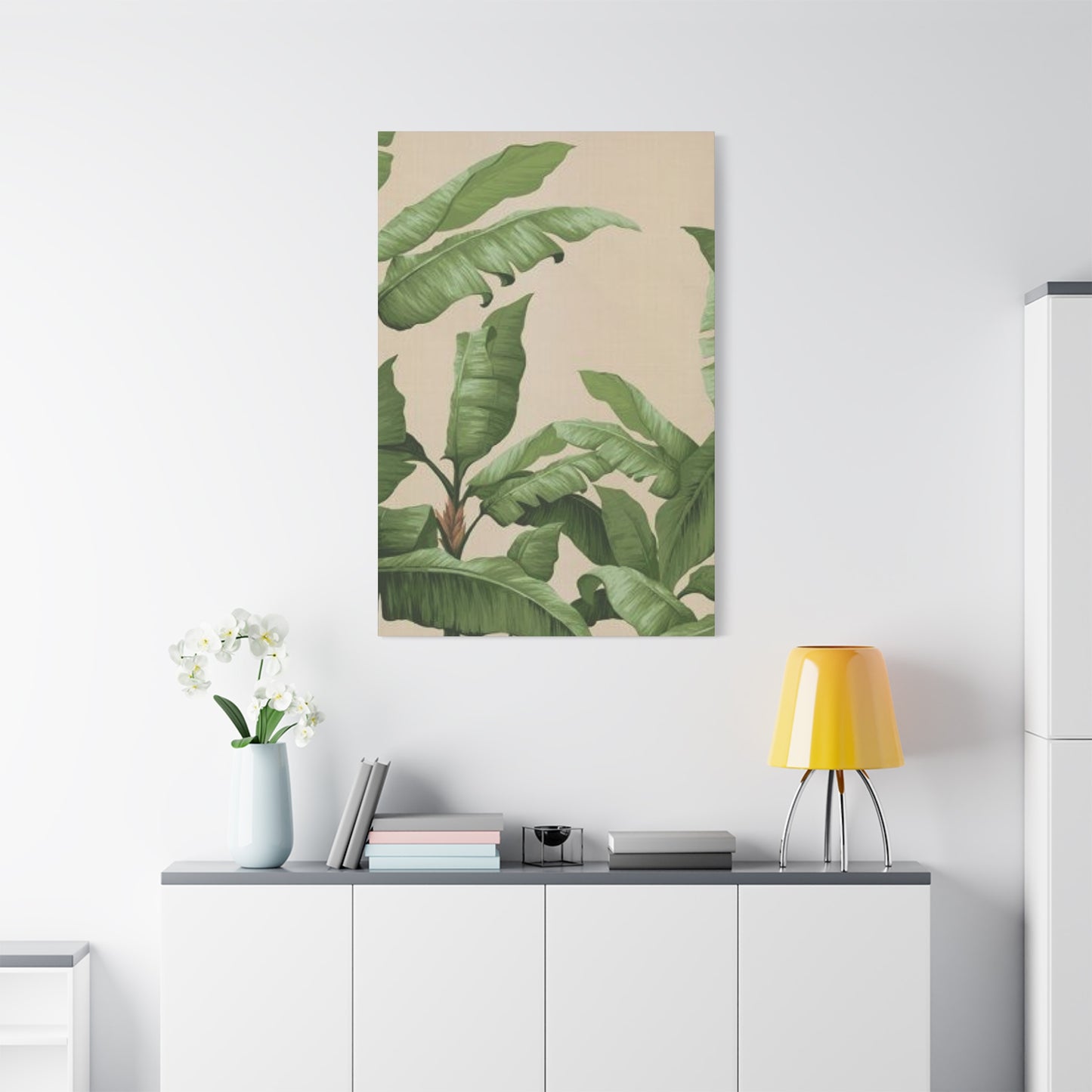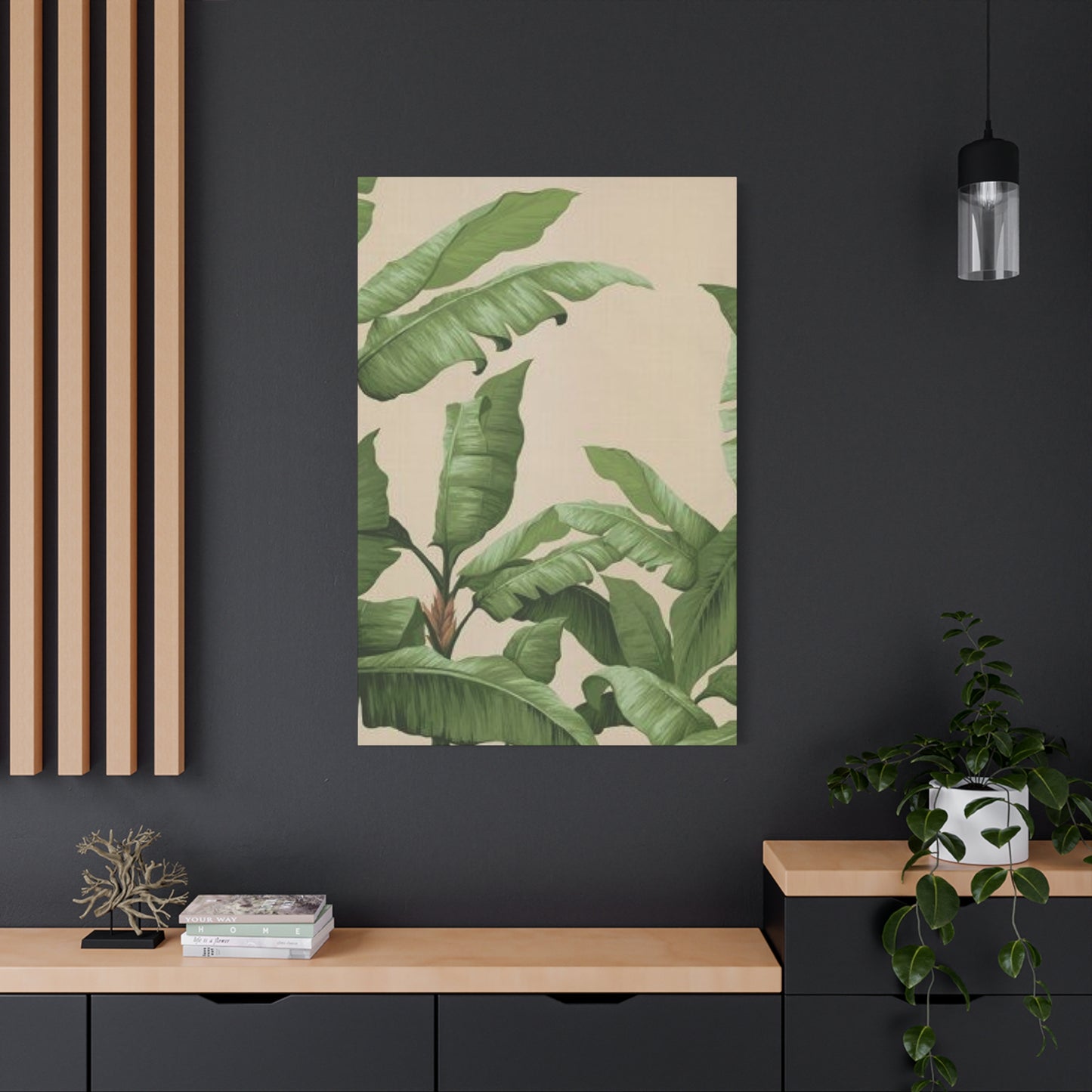Creating Paradise Indoors: Palm Tree Wall Art That Transforms Your Living Experience
The allure of tropical aesthetics has captivated homeowners seeking to infuse their residences with warmth, serenity, and natural beauty. Palm tree wall art stands as one of the most versatile and impactful ways to achieve this transformation, offering an immediate connection to paradise-like environments without the constraints of climate or geography. This comprehensive exploration delves into the multifaceted world of palm-themed decorative elements, examining how these artistic pieces can revolutionize any living environment while creating lasting impressions on inhabitants and guests alike.
Tropical Palm Tree Canvas Prints: Bringing Paradise to Your Walls
Canvas prints featuring tropical palm trees represent one of the most popular and accessible methods for introducing exotic ambiance into residential settings. These artistic reproductions capture the essence of far-off destinations, allowing homeowners to experience the tranquility of tropical beaches and lush landscapes from the comfort of their own homes. The versatility of canvas as a medium provides numerous advantages, including durability, affordability, and the ability to showcase vibrant colors that remain fade-resistant over extended periods.
The selection process for tropical palm tree canvas prints involves considering various factors that contribute to their overall effectiveness as decorative elements. Size considerations play a crucial role, as larger prints can serve as dramatic focal points, while smaller pieces work effectively when grouped together to create gallery walls or complement existing artwork. The color palette of these prints ranges from vibrant, saturated hues that evoke bright sunny days to more subdued, muted tones that provide sophisticated elegance suitable for contemporary design schemes.
Quality canvas prints utilize advanced printing technologies that ensure crisp detail reproduction and color accuracy. High-resolution imagery captures the intricate textures of palm fronds, the roughness of tree bark, and the subtle gradations of tropical skies. Professional-grade inks resist fading and maintain their vibrancy even when exposed to natural light, ensuring that these decorative elements retain their visual impact for years to come.
The framing options for canvas prints provide additional customization opportunities. Gallery-wrapped canvases offer a modern, streamlined appearance that works well in contemporary settings, while traditional frames add classical elegance and can help integrate the artwork with existing decorative elements. The choice between these options depends largely on the overall aesthetic goals and the specific requirements of the room where the artwork will be displayed.
Installation considerations for large canvas prints require careful planning to ensure proper support and optimal viewing angles. Professional mounting systems distribute weight evenly across wall surfaces, preventing damage and ensuring long-term stability. Strategic placement takes into account natural and artificial lighting conditions to maximize visual impact while minimizing glare and reflections that could detract from the viewing experience.
The psychological benefits of tropical palm tree canvas prints extend beyond mere aesthetic enhancement. Research in environmental psychology suggests that exposure to natural imagery, even in reproduced form, can reduce stress levels, improve mood, and enhance overall well-being. The association of palm trees with vacation experiences and relaxation creates positive emotional responses that contribute to a more comfortable and inviting living environment.
Maintenance requirements for canvas prints are minimal, typically involving gentle dusting with soft brushes or microfiber cloths. Avoiding exposure to excessive moisture and extreme temperature fluctuations helps preserve the integrity of both the canvas material and the printed imagery. Regular care ensures that these decorative elements continue to provide their intended visual and psychological benefits throughout their lifespan.
The versatility of tropical palm tree canvas prints allows for creative arrangement possibilities that can accommodate various room configurations and design preferences. Triptych arrangements create dynamic visual narratives, while single large-format pieces provide bold statements that anchor entire room designs. The ability to mix and match different sizes and orientations provides endless possibilities for creating unique and personalized decorative schemes.
Economic considerations make canvas prints an attractive option for homeowners seeking high-impact decorative solutions without substantial financial investment. The availability of various price points allows for budget-conscious selection while still achieving professional-quality results. Online retailers and local printing services offer custom options that enable personalization of existing tropical themes or the creation of entirely unique compositions based on individual preferences and requirements.
Minimalist Palm Tree Illustrations: Sophisticated Simplicity for Modern Homes
The minimalist approach to palm tree illustrations represents a refined interpretation of tropical themes that aligns perfectly with contemporary design philosophies emphasizing clean lines, uncluttered compositions, and sophisticated color palettes. These artistic interpretations distill the essential visual elements of palm trees into their most fundamental forms, creating powerful decorative pieces that complement modern architectural styles and furnishing choices.
Minimalist palm tree illustrations typically employ limited color schemes that range from monochromatic presentations to carefully curated two or three-color combinations. Black and white interpretations offer timeless elegance that transcends seasonal trends and decorating fads, while subtle color accents can provide just enough visual interest to complement specific design schemes without overwhelming existing elements. The restraint shown in color selection allows these pieces to integrate seamlessly with diverse decorative approaches.
The artistic techniques employed in creating minimalist palm tree illustrations vary considerably, from hand-drawn interpretations that showcase individual artistic expression to digitally created compositions that offer precision and reproducibility. Vector-based illustrations provide scalability without quality loss, making them ideal for various applications ranging from small accent pieces to large-scale wall installations. The clean edges and smooth curves characteristic of minimalist design translate beautifully to palm tree forms, emphasizing the natural grace and elegance of these tropical plants.
Typography integration in minimalist palm tree illustrations adds another dimension of artistic expression and personalization. Inspirational quotes, geographical references, or simple descriptive terms can be incorporated into compositions without disrupting the overall aesthetic balance. The selection and placement of text elements require careful consideration to maintain the minimalist philosophy while adding meaningful content that enhances the viewer's experience.
The psychological impact of minimalist palm tree illustrations differs from more detailed or colorful alternatives, often promoting feelings of calm and mental clarity rather than excitement or stimulation. This makes them particularly suitable for bedroom environments, meditation areas, home offices, or any location where peaceful contemplation and relaxation are priorities. The simplified visual information allows viewers to project their own experiences and emotions onto the artwork, creating personal connections that evolve over time.
Production methods for minimalist palm tree illustrations encompass various printing technologies and substrate options. High-quality digital printing on archival papers ensures longevity and color stability, while alternative materials such as metal prints or acrylic mounting provide contemporary presentation options that align with minimalist design principles. The choice of substrate can significantly impact the final appearance and feel of the artwork, with matte finishes promoting subtle sophistication and glossy surfaces adding contemporary edge.
Framing considerations for minimalist palm tree illustrations require attention to proportion, materials, and color coordination. Simple, clean frames in neutral colors or natural wood tones typically work best, allowing the artwork itself to remain the focal point. The width of frame moldings should be proportionate to the size of the illustration, with larger pieces typically requiring more substantial framing to maintain visual balance. Alternative presentation methods, such as floating mounts or clip frames, can further emphasize the minimalist aesthetic.
The scalability of minimalist palm tree illustrations makes them suitable for various applications beyond traditional wall-mounted presentations. Large-format pieces can serve as room dividers or architectural elements, while smaller interpretations work effectively as components of gallery walls or as accent pieces in compact areas. The flexibility inherent in minimalist design allows for creative applications that might not be possible with more detailed or complex artistic interpretations.
Customization opportunities for minimalist palm tree illustrations are extensive, with many artists and designers offering personalized services that create unique pieces tailored to specific requirements and preferences. Custom color matching ensures perfect coordination with existing decorative elements, while size modifications accommodate specific architectural constraints or design goals. The relative simplicity of minimalist compositions often makes customization more accessible and affordable than complex artistic works.
The longevity of minimalist palm tree illustrations as decorative elements stems from their timeless appeal and resistance to dating due to style trends. The emphasis on fundamental forms and restrained presentation ensures that these pieces remain relevant and visually appealing even as broader decorating trends evolve. This durability makes them wise investments for homeowners seeking decorative elements that will provide lasting value and satisfaction.
Beach Vibes with Palm Wall Art: Creating Coastal Atmosphere
The creation of authentic beach vibes through palm wall art involves more than simply hanging tropical-themed pictures; it requires a thoughtful approach to composition, color coordination, and atmospheric elements that collectively transport viewers to seaside locations. This comprehensive approach to coastal-themed decoration recognizes the multisensory nature of beach experiences and seeks to replicate these sensations through visual means.
Color psychology plays a fundamental role in establishing convincing beach vibes through palm wall art. The selection of pieces that incorporate ocean blues, sandy beiges, sunset oranges, and sky whites creates a cohesive palette that immediately suggests coastal environments. These colors work together to establish the foundation for authentic beach atmospheres, with each hue contributing specific emotional and psychological responses that combine to create the desired overall effect.
The layering of different artistic styles and mediums enhances the authenticity of beach-themed environments created through palm wall art. Combining photographs with illustrations, paintings with prints, and various textures creates visual depth and interest that mirrors the complexity of actual coastal landscapes. This multi-dimensional approach prevents the decorative scheme from appearing flat or artificial, instead building rich visual environments that engage viewers on multiple levels.
Lighting considerations for beach-themed palm wall art are crucial for maintaining the intended atmosphere throughout different times of day and seasons. Natural light sources that can be supplemented with artificial lighting help maintain the bright, airy feeling associated with coastal environments. The positioning of artwork in relation to windows and light sources can create dramatic effects that change throughout the day, mimicking the natural lighting variations experienced at actual beach locations.
The incorporation of complementary decorative elements alongside palm wall art strengthens the overall beach theme and creates more convincing coastal environments. Natural materials such as driftwood, shells, coral, and sea glass can be integrated into the presentation of palm artwork or displayed as supporting elements that reinforce the coastal theme. These additions help bridge the gap between artistic representation and physical reality.
Textural considerations in beach-themed palm wall art add another layer of authenticity to coastal decorative schemes. Artwork that incorporates sand textures, wave patterns, or weathered surfaces provides tactile interest that engages viewers beyond purely visual appreciation. These textural elements can be achieved through various artistic techniques or by selecting pieces printed on specialty substrates that provide physical texture.
The geographical inspiration for beach-themed palm wall art can range from specific locations to generalized tropical concepts, with each approach offering distinct advantages and characteristics. Location-specific pieces that reference particular beaches or coastal regions provide opportunities for personal connections and memories, while more general interpretations offer broader appeal and flexibility in decorative applications. The choice between these approaches depends on personal preferences and the intended emotional impact of the decorative scheme.
Seasonal adaptability of beach-themed palm wall art allows these decorative elements to provide year-round coastal atmosphere regardless of actual climate conditions. During colder months, the warm colors and tropical imagery can provide psychological warmth and escapism, while in warmer seasons, they complement natural conditions and extend the outdoor feeling into indoor environments. This seasonal flexibility makes beach-themed palm wall art particularly valuable in regions with variable climates.
The social aspects of beach-themed environments created through palm wall art contribute to their effectiveness as gathering areas and entertainment venues. The relaxed, vacation-like atmosphere suggested by coastal decorative themes encourages social interaction and creates welcoming environments for guests. This psychological effect can transform ordinary living areas into destinations that people actively seek out for relaxation and socialization.
Scale relationships in beach-themed palm wall art installations require careful consideration to maintain proper proportional balance and visual hierarchy. Large statement pieces can anchor entire rooms and provide focal points around which other elements are arranged, while smaller pieces can be used to create rhythm and continuity throughout connected areas. The interplay between different scales creates visual interest and prevents decorative schemes from appearing monotonous or predictable.
The maintenance requirements for beach-themed palm wall art may include considerations for humidity control and protection from environmental factors that could affect the longevity of the artwork. Coastal-themed rooms often incorporate elements that increase humidity levels, so selecting artwork and framing materials that can withstand these conditions ensures long-term durability and appearance retention.
Sunset Palm Tree Silhouette Art: Dramatic Elegance for Any Room
Sunset palm tree silhouette art represents one of the most dramatic and emotionally impactful forms of tropical-themed decoration, combining the romantic appeal of sunset imagery with the exotic silhouettes of palm trees. This artistic approach creates powerful visual statements that can transform ordinary rooms into dramatic, sophisticated environments that evoke the magic of tropical evenings and the tranquility of paradise-like settings.
The artistic technique of silhouette creation emphasizes form and composition over detailed representation, resulting in bold, graphic images that make strong visual statements. The contrast between dark palm tree silhouettes and brilliantly colored sunset skies creates natural focal points that draw the eye and anchor decorative schemes. This high-contrast approach ensures that sunset palm tree silhouette art remains visible and impactful even in rooms with complex decorative elements or busy patterns.
Color gradation in sunset imagery provides opportunities for sophisticated color coordination with existing room elements. The natural progression from deep purples and blues through oranges and reds to pale yellows and pinks creates a built-in color palette that can be echoed throughout room decorations. This color progression also provides different emotional tones within a single piece, from the calming effects of cooler colors to the energizing influence of warmer hues.
The emotional resonance of sunset imagery taps into universal human experiences and associations, making sunset palm tree silhouette art particularly effective at creating desired emotional responses in viewers. Sunsets are associated with endings, transitions, romance, and contemplation, creating opportunities for rooms to serve multiple emotional functions depending on the specific needs of occupants at different times.
Size considerations for sunset palm tree silhouette art take on particular importance due to the dramatic nature of sunset imagery. Large-scale presentations can overwhelm smaller rooms or compete unsuccessfully with other strong visual elements, while pieces that are too small may lose the impact that makes sunset imagery so compelling. The optimal size depends on room dimensions, viewing distances, and the intended role of the artwork within the overall decorative scheme.
The time-of-day associations inherent in sunset imagery create opportunities for strategic placement within homes to maximize their emotional and psychological impact. Bedrooms, dining rooms, and relaxation areas are natural locations for sunset palm tree silhouette art, as these environments often benefit from the romantic and calming associations of sunset imagery. The timing of natural light in these areas can create interesting interactions with the artificial sunset colors in the artwork.
Artistic medium selection for sunset palm tree silhouette art affects both the visual impact and the longevity of these decorative elements. Traditional painting techniques can provide unique textures and color variations that enhance the natural beauty of sunset imagery, while digital printing offers consistency and the ability to reproduce successful compositions multiple times. The choice between these approaches depends on individual preferences, budget considerations, and the intended permanence of the installation.
The compositional elements of sunset palm tree silhouette art extend beyond the obvious palm trees and sunset colors to include considerations of horizon placement, cloud formations, and foreground elements. These compositional choices significantly impact the emotional tone and visual balance of the finished piece. Low horizon lines emphasize the sky and create feelings of openness and freedom, while higher horizons focus attention on the palm trees and create more intimate, enclosed feelings.
Grouping strategies for sunset palm tree silhouette art can create powerful decorative statements that transform entire walls or room sections. Sequential pieces that show the progression of sunset colors throughout the evening create narrative interest and visual movement, while variations on similar themes provide continuity without monotony. The spacing and arrangement of grouped pieces require careful attention to maintain individual impact while creating cohesive overall compositions.
The photographic versus artistic interpretation of sunset palm tree silhouettes offers different aesthetic approaches that appeal to various decorative preferences. Photographic representations provide realistic detail and authentic color reproduction that can transport viewers to specific locations, while artistic interpretations allow for creative color enhancement and compositional modifications that may be more effective as decorative elements.
Lighting design considerations for rooms containing sunset palm tree silhouette art should take into account the dramatic color contrasts and the emotional associations of the imagery. Warm lighting sources complement the sunset colors and maintain the intended emotional atmosphere, while cool lighting can create interesting contrasts that emphasize the silhouette elements. Dimmable lighting options allow for adjustment of room atmosphere to match different moods and activities.
The cultural and symbolic associations of sunset palm tree imagery extend beyond simple aesthetic appreciation to include references to paradise, escape, romance, and tropical luxury. These associations can be leveraged to create rooms that fulfill specific emotional or psychological functions within homes, from romantic retreats to meditation areas to entertainment venues that suggest exotic destinations.
Vintage Palm Tree Travel Posters: Nostalgic Charm Meets Tropical Dreams
Vintage palm tree travel posters combine the aesthetic appeal of tropical imagery with the nostalgic charm of mid-century advertising design, creating unique decorative elements that speak to both wanderlust and appreciation for classic graphic design. These artistic pieces represent a specific historical period in travel promotion while maintaining contemporary relevance as sophisticated decorative elements that add character and personality to modern living environments.
The historical context of vintage travel posters provides rich background that enhances their appeal as decorative elements. Created during the golden age of travel advertising, these posters were originally designed to promote exotic destinations to populations who had limited exposure to tropical locations. The artistic techniques employed reflected the optimism and aspirations of their era, using bold colors, stylized imagery, and compelling typography to create desire for far-off destinations.
Typography in vintage palm tree travel posters represents an important component of their overall aesthetic appeal and historical authenticity. The fonts and lettering styles used during different periods of travel advertising reflect broader design trends and cultural attitudes toward travel and adventure. Art deco influences, streamlined moderne elements, and bold sans-serif typefaces all contributed to the distinctive visual character that makes vintage travel posters immediately recognizable and aesthetically appealing.
Color palettes in authentic vintage palm tree travel posters often differed significantly from contemporary tropical imagery, reflecting both the printing technologies available at the time and the aesthetic preferences of their era. These historical color choices can provide unique decorative opportunities for homeowners seeking to create sophisticated room schemes that reference specific historical periods or design movements while maintaining tropical themes.
The reproduction quality of vintage palm tree travel posters significantly impacts their effectiveness as decorative elements and their longevity as investments. High-quality reproductions that accurately capture the colors, textures, and subtle details of original posters provide the best aesthetic results, while lower-quality reproductions may lack the visual impact that makes vintage travel posters so appealing. Professional printing services that specialize in historical reproductions typically produce the most satisfactory results.
Authenticity considerations in vintage palm tree travel posters range from museum-quality reproductions of specific historical pieces to contemporary interpretations that capture the spirit of vintage design without necessarily reproducing specific historical examples. Both approaches have merit, with authentic reproductions providing historical accuracy and contemporary interpretations offering greater flexibility in size, color, and compositional options.
The collecting aspect of vintage palm tree travel posters appeals to homeowners who appreciate the investment potential and historical significance of these decorative elements. Original posters from significant airlines, travel companies, or famous artists can appreciate in value over time while providing immediate aesthetic benefits. The research and acquisition process can become an engaging hobby that adds personal significance to the decorative elements.
Framing considerations for vintage palm tree travel posters require attention to historical accuracy and preservation requirements. Period-appropriate framing materials and techniques can enhance the authentic vintage appearance, while modern conservation methods ensure long-term preservation of valuable or sentimental pieces. The balance between authenticity and preservation needs to be carefully managed to achieve optimal results.
The geographic specificity of many vintage palm tree travel posters creates opportunities for personal connections and travel memories. Posters that reference specific destinations can commemorate past travels or represent aspirational destinations for future trips. This personal significance adds emotional value that extends beyond pure aesthetic appreciation and can make these decorative elements more meaningful to homeowners.
Room placement strategies for vintage palm tree travel posters should consider both the visual impact and the thematic appropriateness of different locations within homes. Home offices, libraries, and study areas can benefit from the inspirational and aspirational qualities of travel imagery, while living areas and entertainment rooms can leverage the social and conversational aspects of vintage travel themes.
The educational value of vintage palm tree travel posters extends their function beyond pure decoration to include historical documentation and cultural artifact preservation. These pieces can serve as conversation starters and educational tools that provide insights into historical travel patterns, cultural attitudes, and artistic developments. This additional function can justify their inclusion in homes where purely decorative elements might not be appropriate.
Grouping strategies for vintage palm tree travel posters can create powerful thematic statements that transform walls into travel galleries or historical exhibitions. Chronological arrangements that show the evolution of travel advertising over time provide educational interest, while geographic groupings can create virtual travel experiences that transport viewers to multiple destinations simultaneously.
Palm Trees in Modern Home Decor: Contemporary Integration Strategies
The integration of palm tree imagery into modern home decor requires sophisticated understanding of contemporary design principles and the ability to balance tropical themes with minimalist aesthetics, clean lines, and neutral color palettes that characterize modern decorating approaches. This integration challenge creates opportunities for creative solutions that maintain the emotional benefits of tropical imagery while respecting the visual discipline required by modern design philosophies.
Scale relationships in modern home decor applications of palm tree imagery often favor larger, statement pieces over collections of smaller items, reflecting the modern preference for bold, uncluttered compositions. These large-scale presentations create focal points that can anchor entire room designs while maintaining the clean, uncompetitive environment that modern decorating approaches require. The selection of appropriately sized pieces requires careful measurement and planning to achieve optimal visual impact.
Color coordination between palm tree imagery and modern decorative schemes typically involves selecting pieces that complement neutral color palettes while providing just enough color interest to prevent environments from appearing sterile or uninviting. Monochromatic palm tree presentations work particularly well in modern contexts, as do pieces that incorporate sophisticated color combinations that reference tropical themes without overwhelming contemporary aesthetic sensibilities.
Material considerations for modern applications of palm tree decor extend beyond traditional printing substrates to include contemporary materials such as metal prints, acrylic mounts, and alternative display methods that align with modern aesthetic preferences. These contemporary presentation methods can transform traditional tropical imagery into sophisticated decorative elements that complement modern furnishing and architectural elements.
The architectural integration of palm tree decor in modern homes requires consideration of sight lines, lighting conditions, and the relationship between decorative elements and structural features. Modern architectural elements such as exposed beams, large windows, and open floor plans create both opportunities and challenges for incorporating tropical imagery in ways that enhance rather than compete with architectural features.
Furniture coordination with palm tree decor in modern settings involves selecting pieces and arrangements that complement the tropical imagery while maintaining the clean, uncluttered appearance that modern design requires. The placement of furniture in relation to palm tree artwork can create viewing areas that encourage contemplation and appreciation while supporting the functional requirements of modern living.
Technology integration in modern homes creates opportunities for dynamic presentations of palm tree imagery through digital displays, projection systems, and smart home technologies that can change decorative elements based on time of day, season, or mood preferences. These technological solutions allow for greater flexibility in decorative schemes while maintaining the clean aesthetic that modern design requires.
The psychological benefits of tropical imagery in modern environments may be particularly valuable given the potential sterility or coldness that can result from overly minimalist decorating approaches. Palm tree decor can provide the natural elements and emotional warmth that balance the intellectual appeal of modern design with the human need for natural connection and sensory richness.
Lighting design for modern presentations of palm tree decor should emphasize the clean lines and sophisticated color relationships that make these pieces appropriate for contemporary environments. Track lighting, recessed fixtures, and linear LED installations can provide precise illumination that enhances the visual impact of tropical imagery while maintaining the architectural discipline required by modern design approaches.
Seasonal adaptation strategies for palm tree decor in modern homes can involve rotating pieces or adjusting presentation methods to maintain visual interest throughout the year while respecting the modern preference for controlled, intentional decorative changes rather than cluttered, constantly changing arrangements. These strategies ensure that tropical elements remain fresh and engaging without disrupting the underlying modern aesthetic framework.
The maintenance requirements for modern presentations of palm tree decor may be simplified compared to traditional decorative approaches, as modern design preferences for uncluttered environments typically result in fewer pieces that require individual attention. However, the pieces that are selected for modern environments often represent significant investments that justify careful maintenance and protection procedures.
Customization opportunities for palm tree decor in modern homes can involve working with contemporary artists and designers to create unique pieces that specifically address the challenges of integrating tropical themes with modern aesthetic requirements. These custom solutions can provide optimal results that off-the-shelf alternatives may not achieve, particularly in homes with unique architectural features or specific decorative goals.
Watercolor Palm Tree Paintings: Soft Elegance and Artistic Expression
Watercolor palm tree paintings represent a sophisticated artistic approach to tropical themes that emphasizes subtle color transitions, organic forms, and the inherent unpredictability that makes watercolor techniques so appealing to both artists and collectors. These artistic creations offer unique decorative possibilities that cannot be replicated through photography or digital printing, providing homeowners with one-of-a-kind pieces that bring both tropical ambiance and fine art appreciation to their living environments.
The technical characteristics of watercolor as an artistic medium contribute significantly to its effectiveness in representing palm tree subjects. The fluid nature of watercolor paints allows for natural color blending that mirrors the organic color transitions found in tropical landscapes, from the subtle gradations of sunset skies to the varied greens of palm fronds moving in ocean breezes. This natural color flow creates more realistic and emotionally resonant representations than can be achieved through more controlled artistic techniques.
Color transparency in watercolor palm tree paintings creates depth and luminosity that adds visual richness to tropical themes. The layering of transparent color washes allows light to penetrate through multiple levels of pigment, creating subtle color variations and natural-looking shadows that bring palm tree subjects to life. This transparency effect cannot be duplicated through other artistic mediums, making watercolor paintings valuable additions to decorative schemes that prioritize sophisticated visual effects.
The artistic spontaneity inherent in watercolor techniques ensures that each palm tree painting possesses unique characteristics that cannot be exactly replicated, even by the same artist working on similar subjects. This individuality adds significant value to watercolor paintings as decorative elements, providing homeowners with truly unique pieces that reflect both the artist's skill and the unpredictable beauty of the watercolor medium itself.
Paper selection for watercolor palm tree paintings affects both the artistic process and the final appearance of completed works. Different paper textures, weights, and compositions interact differently with watercolor pigments, creating varying effects that can enhance specific aspects of palm tree subjects. Understanding these technical considerations helps in selecting watercolor paintings that will provide optimal aesthetic results in specific decorative applications.
The emotional qualities of watercolor palm tree paintings often differ from other artistic approaches to tropical themes, typically emphasizing gentleness, tranquility, and contemplative moods rather than bold excitement or dramatic impact. This emotional character makes watercolor paintings particularly suitable for bedroom environments, reading areas, meditation rooms, and other locations where peaceful, contemplative atmospheres are desired.
Original versus reproduction considerations for watercolor palm tree paintings involve significant differences in both cost and aesthetic impact. Original watercolor paintings provide unique artistic experiences that cannot be duplicated, while high-quality reproductions can make watercolor aesthetics more accessible to broader audiences. The choice between these options depends on budget considerations, aesthetic goals, and the importance placed on owning unique artistic works.
The preservation requirements for watercolor palm tree paintings are more demanding than those for many other decorative elements, as watercolor pigments can be sensitive to light exposure, humidity changes, and environmental contaminants. Proper framing with UV-protective glazing and careful attention to environmental conditions ensure that these valuable artistic works maintain their beauty and value over extended periods.
Artist selection for watercolor palm tree paintings involves considering both technical skill and artistic vision, as the effectiveness of watercolor techniques depends heavily on the artist's ability to control and direct the fluid characteristics of the medium. Established watercolor artists often develop distinctive styles and approaches that can be matched to specific decorative needs and aesthetic preferences.
Size limitations for watercolor palm tree paintings are often determined by the technical requirements of the watercolor medium and the practical considerations of paper handling and framing. Large watercolor works require special techniques and materials, while smaller pieces may lack the visual impact needed for certain decorative applications. Understanding these size considerations helps in selecting appropriate pieces for specific room requirements.
The investment potential of watercolor palm tree paintings depends on factors including artist reputation, technical quality, and the historical performance of similar works in art markets. While not all watercolor paintings appreciate in value, those by recognized artists or possessing exceptional technical merit may provide both aesthetic enjoyment and financial returns over time.
Framing considerations for watercolor palm tree paintings require attention to both preservation requirements and aesthetic enhancement. Museum-quality framing materials and techniques ensure long-term preservation while appropriate mat colors and frame styles can enhance the visual impact of the artwork. The selection of framing approaches should balance preservation needs with decorative goals to achieve optimal results.
Black and White Palm Tree Prints: Timeless Sophistication
Black and white palm tree prints offer a sophisticated alternative to colorful tropical imagery that emphasizes form, texture, and composition over chromatic impact. These monochromatic interpretations of palm tree subjects provide timeless aesthetic appeal that transcends seasonal decorating trends and color scheme limitations, making them valuable additions to homes where long-term decorative stability and sophisticated visual impact are priorities.
The artistic techniques employed in creating effective black and white palm tree prints require different approaches than color photography or illustration, with emphasis placed on contrast management, texture enhancement, and compositional strength. The removal of color information forces viewers to focus on the fundamental visual elements of palm tree subjects, often revealing details and relationships that might be overlooked in color presentations. This concentrated focus can create more powerful and memorable visual experiences.
Contrast management in black and white palm tree prints involves balancing the tonal relationships between different elements of the composition to create optimal visual impact and readability. The natural contrast between dark palm tree trunks and bright sky backgrounds provides strong compositional elements, while the intermediate tones of palm fronds and environmental details require careful handling to maintain detail without creating muddy or confusing visual information.
Texture emphasis in monochromatic palm tree prints allows for detailed exploration of surface qualities that contribute significantly to the overall aesthetic appeal of these subjects. The rough bark of palm trunks, the linear patterns of palm fronds, and the varied textures of tropical environments all become more prominent when color distractions are removed, creating opportunities for sophisticated visual appreciation that rewards close examination.
The historical associations of black and white photography connect these prints to established fine art traditions and classical aesthetic approaches that add cultural depth and intellectual appeal to their decorative function. This historical connection can enhance the perceived value and sophistication of black and white palm tree prints, making them appropriate for formal or professional environments where classical aesthetic references are valued.
Lighting considerations for black and white palm tree prints focus on emphasizing the tonal relationships and contrast patterns that define their visual impact. Strategic lighting can enhance the three-dimensional appearance of these monochromatic images while preventing flat or lifeless presentation that might diminish their aesthetic effectiveness. The positioning of both natural and artificial light sources affects how black and white prints are perceived throughout different times of day.
Print quality considerations for black and white palm tree prints involve technical factors that differ from color printing requirements. The reproduction of subtle tonal gradations and the maintenance of detail in both shadow and highlight areas require specialized printing techniques and materials. Professional printing services that specialize in monochromatic work typically produce superior results compared to general-purpose printing facilities.
Room compatibility for black and white palm tree prints extends to virtually any decorative scheme, as the absence of color eliminates potential conflicts with existing color palettes while providing tropical themes that can complement various design approaches. This versatility makes black and white prints particularly valuable for homeowners who prefer flexibility in their decorative choices or who anticipate future changes in color schemes.
Size scaling for black and white palm tree prints often allows for larger presentations than might be appropriate with color versions, as the monochromatic approach typically creates less visual competition with other room elements. Large-scale black and white prints can serve as architectural elements that add visual interest without overwhelming existing decorative or structural features.
The photographic versus artistic interpretation of black and white palm tree subjects offers different aesthetic approaches that appeal to various decorative preferences and functional requirements. Photographic interpretations provide realistic detail and authentic representation, while artistic interpretations allow for creative enhancement and stylistic interpretation that may be more effective as purely decorative elements.
Grouping strategies for black and white palm tree prints can create sophisticated gallery walls or thematic presentations that leverage the cohesive visual character of monochromatic imagery. The absence of color conflicts allows for creative mixing of different subjects, compositions, and sizes within unified presentations that might be difficult to achieve with color imagery.
The longevity advantages of black and white palm tree prints extend beyond their resistance to decorating trends to include their reduced susceptibility to fading and color degradation over time. Quality monochromatic prints can maintain their visual impact for decades with proper care and protection, making them wise investments for homeowners seeking lasting decorative value.
Palm Tree Art for Living Rooms: Central Focus and Social Atmosphere
Living rooms serve as the primary gathering and entertainment areas in most homes, making the selection and placement of palm tree art particularly important for creating welcoming, attractive environments that reflect the homeowners' personalities while providing comfortable settings for social interaction. The central location and high visibility of living room artwork require careful consideration of scale, style, and thematic integration to achieve optimal results that enhance both daily living experiences and special entertaining occasions.
Scale considerations for living room palm tree art typically favor larger pieces or grouped arrangements that can command attention in these spacious, high-traffic areas. Single oversized pieces can serve as dramatic focal points that anchor entire room designs, while carefully arranged collections of smaller pieces can create dynamic visual interest that encourages exploration and conversation. The relationship between artwork size and room proportions must be carefully balanced to avoid overwhelming or underwhelming effects.
Viewing distance factors in living room environments affect the optimal detail level and composition style for palm tree art selections. Pieces that will be viewed primarily from seating areas across the room require different compositional approaches than those intended for close examination. Bold, simple compositions with strong visual impact work well for distance viewing, while detailed, complex pieces are more appropriate for closer viewing situations.
Social interaction considerations for living room palm tree art include the potential for these decorative elements to serve as conversation starters and focal points for social gatherings. Artwork that references travel experiences, artistic techniques, or cultural themes can provide natural conversation topics that help break ice and encourage social interaction among guests. The selection of pieces with interesting backstories or cultural significance can enhance their social value.
Lighting integration for living room palm tree art must accommodate various usage scenarios, from bright daytime activities to intimate evening entertainment. Adjustable lighting systems that can highlight artwork during social occasions while providing appropriate ambient lighting for daily activities ensure that palm tree art remains visually effective throughout different times and functions. The placement of both natural and artificial light sources affects how artwork appears during different usage periods.
Furniture relationship considerations for living room palm tree art include the positioning of seating areas, entertainment centers, and other functional elements in ways that complement and enhance the decorative impact of tropical artwork. The height and placement of artwork should create pleasing visual relationships with furniture arrangements while ensuring that important pieces remain visible and accessible from primary seating areas.
Color coordination between living room palm tree art and existing decorative elements requires careful planning to achieve cohesive results that enhance rather than compete with furnishings, wall colors, and accessory selections. The color palette of selected artwork should complement existing room elements while providing enough visual interest to serve as effective focal points. This coordination process may influence both artwork selection and room color scheme decisions.
Seasonal adaptation strategies for living room palm tree art can help maintain visual interest throughout the year while responding to changing natural lighting conditions and seasonal decorating preferences. Rotating pieces or adjusting lighting approaches can provide subtle seasonal changes that keep decorative schemes fresh without requiring major renovations or expensive replacements.
Conclusion
Palm tree wall art is more than just a decorative choice—it’s a gateway to creating your own indoor paradise. With its iconic silhouette and tropical allure, palm tree imagery instantly transports you to sun-soaked beaches, gentle ocean breezes, and a laid-back lifestyle. Incorporating palm tree wall art into your home décor transforms everyday living spaces into refreshing retreats, evoking feelings of calm, freedom, and endless summer.
This style of art works beautifully in a variety of spaces—from living rooms and bedrooms to bathrooms and sunrooms—bringing a touch of nature’s elegance and warmth indoors. Whether rendered in lush green tones, soft pastels, or sleek black and white, palm tree prints complement coastal, bohemian, modern, and minimalist interiors alike. The natural curves and textures of palm fronds add a sense of movement and life, balancing static walls with organic energy.
Beyond its aesthetic appeal, palm tree wall art carries symbolic meaning tied to relaxation, resilience, and growth. Palms thrive in challenging environments and stand tall through storms, reminding us of endurance and adaptability. When featured in your living space, these artworks serve as daily inspiration to embrace life’s challenges with grace and to nurture personal growth in a serene environment.
Moreover, palm tree art invites a positive atmosphere, creating a visual escape that encourages mindfulness and mental rejuvenation. In a busy world, having a slice of tropical paradise indoors can reduce stress, spark joy, and elevate your overall living experience.
In conclusion, palm tree wall art offers more than beauty—it offers a lifestyle. It turns your home into a sanctuary where nature’s tranquility and timeless charm converge. By bringing the essence of the tropics inside, you invite warmth, relaxation, and inspiration into your daily life. Let palm tree art be the centerpiece of your décor and watch as it transforms your space into a personal paradise.

















